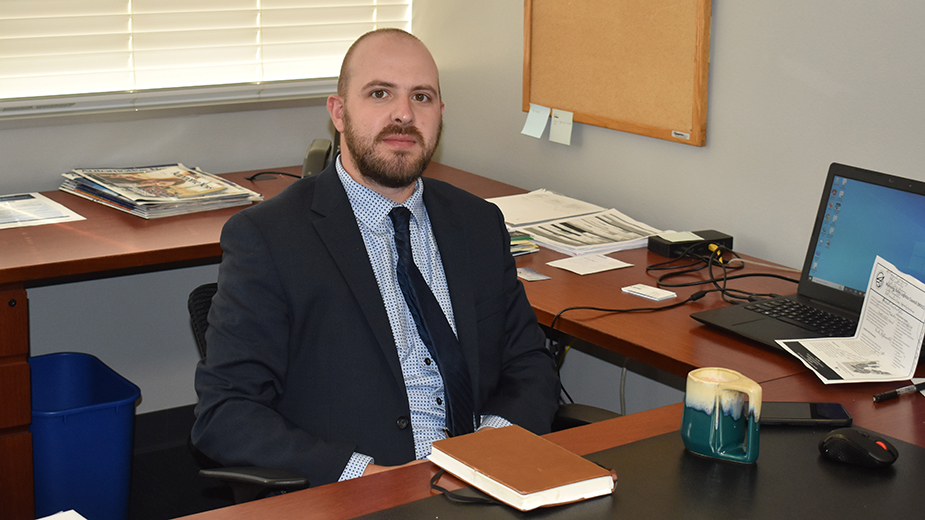YOUNGSTOWN, Ohio – Helping the region capitalize on opportunities and address industry changes in transportation and logistics are among the objectives of the newly established Mahoning Valley Logistics Council.
The goal is to officially launch the council before the end of the year, says Guy Coviello, president and CEO of the Youngstown/Warren Regional Chamber.
“It’s critical to capitalize on the economic opportunities that we see,” Coviello says. Communities the Mahoning Valley competes with for economic development opportunities have similar councils, Coviello says.
At present, the logistics council is “very much in the infancy stage,” says Scott Fleming, co-president of Aim Transportation Solutions in Girard, who has been involved in early discussions regarding the group.
Fleming is hopeful that the council will be able to help move development projects along “a little bit quicker than we have in the past.”
The Regional Chamber announced the creation of the council earlier this year. Eastgate Regional Council of Governments provided $100,000 in seed money for its first year. The funds were allocated from the $12 million fund established for the Mahoning Valley by General Motors Corp. following the closing of its Lordstown plant in 2019.
“We felt that this was a good idea for our area,” says Ken Sympson, director of transportation and infrastructure at Eastgate.
With projects like the Ultium Cells and Lordstown Motors plants and the TJX HomeGoods and FedEx distribution centers, as well as others in and around Lordstown, that area “seemed to be a good fit for it,” Sympson says.
Eastgate and its partners also are pursuing funds for the proposed $25 million Logistics Innovation and Vehicle Electrification – or Live – Zone project in the Lordstown area.
Research done by Eastgate indicates 19% of the nation’s freight goes through the Interstate 76-Interstate 80 corridor.
Given the development near the Ohio Turnpike and Interstate 76, it is “only natural that we continue to try to take advantage of the great logistical environment that we have here,” says David Wilaj, who was announced in March as director of the council.
According to Wilaj, objectives of the logistics council would include setting priorities on infrastructure projects; building relationships between educational institutions and the logistics, warehousing and distribution companies that rely on them to develop future employees; talent attraction; sharing information related to electric vehicles; public transportation; and advocacy on public policy issues related to the logistics industry.
“One of the main issues is to just build those business-to-business connections,” Wilaj says. “Some of these folks might not have been able to get into the same room as the distributor they need or get in the same room as the Turnpike or ODOT and be able to express their needs and create those relationships.”
The warehousing/distribution/fulfillment industry is strong and rapidly changing because of technology, Coviello continues. It has the potential for rapid growth because of its focus on reshoring jobs, filling supply chain gaps and domestic manufacturing.
“We felt, in order to continue to be a big player in that industry in the future, in order to capitalize on the future growth in that space in the future, we needed to bring the stakeholders together,” Coviello says.
One example of how the logistics industry has evolved is in warehouse jobs, he says. Applicants for warehouse jobs have to indicate they are able to lift at least 30 pounds but the day is coming when that will no longer be a prerequisite because of automation.
“What are we doing to train an entire demographic of people in wheelchairs that can have a career they can’t currently?” Coviello asks. “Unless we bring all those key stakeholders together, we will never prepare that workforce.”
Another issue the new council has identified is transporting workers to fill openings in logistics and related positions.
“We’ve got employers that have trouble getting workers and one of the barriers is public transportation,” Coviello says.
Additionally, the council will address the growing use of drones. FlyOhio, a division of the Ohio Department of Development, aims to make Ohio a global leader in air mobility, according to Coviello.
The logistics council will have a 20-member board that is being assembled by the chamber.
“We wanted not to touch one specific area. So, it’s not going to be all trucking companies or all distributors,” Wilaj says. In addition to companies that have a direct role in logistics, warehousing and distribution, there will be representation from manufacturers, workforce development organizations and educational institutions, as well as organizations such as the Western Reserve Port Authority.
“This isn’t just a Mahoning-Trumbull thing,” Wilaj says, noting companies from Mercer and Lawrence counties in Pennsylvania are expected to participate.
The council “definitely fills a void” locally, according to Eastgate’s Sympson. “It gets all of those players in one room to solve problems that they’re having.”
Pictured at top: David Wilaj is director of the newly established Mahoning Valley Logistics Council.
